Sir William Martin (1841-1857)
Sir George Arney (1857- 1875)
Sir James Prendergast (1875-1899)
Rt Hon Sir Robert Stout (1899-1926)
Sir Charles Skerrett (1926-1929)
Rt Hon Sir Michael Myers (1929-1946)
Rt Hon Sir Humphrey O'Leary (1946-1953)
Rt Hon Sir Harold Barrowclough (1953-1966)
Rt Hon Sir Richard Wild (1966-1978)
Rt Hon Sir Ronald Davison (1978-1989)
Rt Hon Sir Thomas Eichelbaum (1989-1999)
Rt Hon Dame Sian Elias (1999-2019)
Sir William Martin (1841-1857)
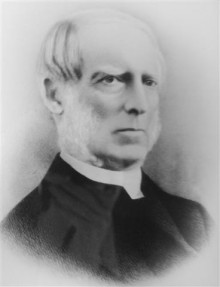
Sir William Martin was appointed as New Zealand's first Chief Justice when he was only 34-years-old.
Born in Birmingham, England in 1807, he was educated at King Edward VI Grammar School in Birmingham then graduated B.A. from St John's College, Cambridge, in 1829. In 1832 he took his M.A and entered Lincolns Inn to study law.
After being admitted to the bar, he specialised in drafting and converyancing. After 5 years, and with no court experience, he became New Zealand's Chief Justice. For more than 2 years he was the only judge in New Zealand.
A shy, quiet man, he handled cases in a cautious, scholarly way that reflected his powerful mind and academic bent. He also assisted the Government in formulating legislation for the new colony.
He held deep religious and moral convictions, which inspired him to publish pamphlets criticising the British Government's policy on Māori land, and supporting Māori in the Taranaki War.
Having been troubled by ill-health for much of his life, he resigned for health reasons in 1857. He retired to Tauraroa in Northland until 1874 then lived in Torquay until his death in 1880.
________________________________________________________________________
Sir George Arney (1857- 1875)
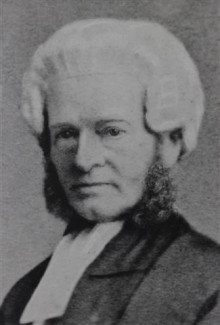
Sir George Arney was born in 1810 in Salisbury, England.
He read classics at Oxford University, and was admitted to the English bar in 1829 at Lincoln's Inn. Sir George came to New Zealand with around 20 years' legal experience as a leading barrister.
His time spent observing the workings of the English courts stood him in good stead for his judicial role in New Zealand. His analysis of legal issues was cautious and exhaustive, sometimes to the point of reproach.
Sir George was friendly and good-humoured, and generous in helping struggling young counsel.
He retired in 1875, returning to England, and died in Torquay in 1883.
________________________________________________________________________
Sir James Prendergast (1875-1899)
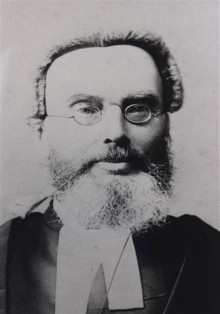
Born in London in 1826, Sir James was the son of an English Queen's Counsel. He did not initially pursue a legal career. After graduating from Cambridge, he worked as a schoolmaster, then travelled to the Australian goldfields. He returned to England to study law, and was admitted to the bar.
In 1862 he sailed for New Zealand, where he practiced law in Dunedin and became a senior partner in Prendergast, Kenyon and Maddock. He became Crown Solicitor in Otago in 1865.
Sir James was set to become Solicitor-General, but after a change of government he was offered the post of Attorney-General (at the time not a political position) instead.
He became the first President of the Law Society when it was formed in 1870.
He was appointed Chief Justice in 1875 and retired in 1899 at the age of 73.
- For discussion of his 1877 judgment Wi Parata v Bishop of Wellington, see: “Lex Aotearoa: An Heroic Attempt to Map the Māori Dimension in Modern New Zealand Law” by Justice Joe Williams, and the 2020 Robin Cooke Lecture “Picking up the threads: The common law – continuity and change in challenging times” by Dame Helen Winkelmann, Chief Justice of New Zealand.
________________________________________________________________________
Rt Hon Sir Robert Stout (1899-1926)

Born in 1844 in the Shetland Islands, Sir Robert Stout arrived in Dunedin when he was 19 years old. Originally a surveyor, due to lack of work he turned to school-teaching, and then to law.
He became an articled clerk in the law office of William Downie Stewart in 1867 and was admitted as a barrister and solicitor in 1871.
Sir Robert was one of the first students of the University of Otago, and subsequently its first law lecturer. He entered provincial politics in 1872, and 6 years later became Attorney-General. He resigned from the House the next year, and returned to his private legal practice.
Re-elected to Parliament in 1884, he became Premier of the Stout-Vogel Government, which lasted for 3 years. Sir Robert was defeated by Richard Seddon for the leadership of the Liberal party in 1893, but remained active in politics until his appointment as Chief Justice in 1899.
As Chief Justice, he demonstrated his sharp mind and capacity for hard work, presiding over more than 1400 reported cases.
In 1921 he became a Privy Councillor.
He retired in 1926 but continued to take part in Legislative Council debates until 1929. He died in July 1930.
________________________________________________________________________
Sir Charles Skerrett (1926-1929)
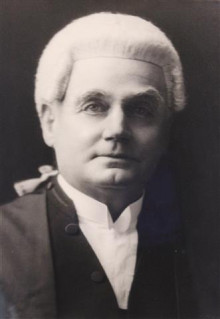
Sir Charles Perrin Skerrett was born in India in 1863, but his family emigrated to Wellington when he was 12. He attended Wellington College and worked as a cadet in the Post Office then in Treasury, and as a clerk in the Wellington Magistrate's Court before deciding on a career in law.
He qualified for the bar in Wellington in 1884, and practised in Wellington for 42 years. In 1907 Sir Charles was among the first group to be appointed King's Counsel in New Zealand.
He was President of the New Zealand Law Society from 1918 to 1926, becoming Chief Justice at the age of 63.
Sir Charles was admired by contemporaries for his combination of intellectual prowess and industriousness.
In 1928 he underwent a series of operations in which both of his legs were amputated. He was unable to perform his duties for much of 1928 and died in February 1929.
________________________________________________________________________
Rt Hon Sir Michael Myers (1929-1946)
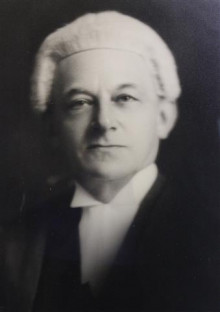
Sir Michael was the first Chief Justice to be born in New Zealand. Born in Motueka in 1873, his family moved to Wellington when he was 6 years old.
He attended Wellington College then entered law as a clerk in the Wellington firm Bell, Gully and Izard, studying as an external student at Caterbury College to graduate LLB.
Sir Michael was appointed Chief Justice only after another barrister, Harold Johnstone, turned down the position, but he proceeded to gain respect for his energy, efficiency and penetrating mind. He promoted important reforms including the Criminal Appeal Act 1945, which significantly expanded the Court of Appeal's jurisdiction.
He was appointed to the Judicial Committee of the Privy Council in 1931, becoming the first New Zealand-born judge to sit on the council.
In 1945, when Sir Michael reached the compulsory retiring age of 72, an Act was passed to extend his term for up to a year, enabling him to take part in international conferences which led to the establishment of the International Court of Justice. He retired as Chief Justice on 31 July 1946 but continued to be involved in legal affairs, including the proposed creation of a separate Court of Appeal.
Sir Michael died on 8 April 1950.
________________________________________________________________________
Rt Hon Sir Humphrey O'Leary (1946-1953)
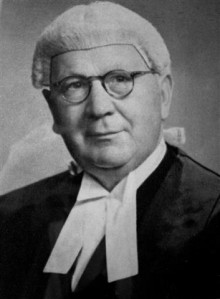
Sir Humphrey was born in the Wairau Valley, Marlborough in 1886. He grew up in a large family with Irish working class roots.
He was schooled in Masterton before gaining a scholarship to study at Wellington College. He was able to study law at Victoria University by working as a law clerk with Phineas Levi.
After graduating he gained experience as a defence counsel before going into partnership in 1910 to gain more civil experience. He left the partnership in 1914 to practice on his own and 5 years later he joined Bell, Gully, Bell and Myers. He became a partner in 1922.
Sir Humphrey became King's Counsel, and then President of the New Zealand Law Society. He was appointed Chief Justice at the age of 60.
Sir Humphrey was known as a conservative man with a sympathetic nature, who never lost his common touch. He was a popular and respected leader of the legal profession.
In his mid 60s, Sir Humphrey developed a heart condition and he died in October 1953.
________________________________________________________________________
Rt Hon Sir Harold Barrowclough (1953-1966)
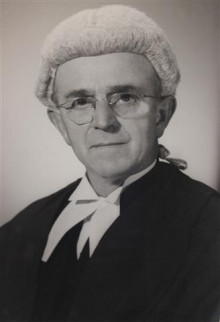
Sir Harold was born in Masterton in 1894 and attended Palmerston North Boys' High School then Otago University.
His studies were interrupted by the First World War and in 1915 he enlisted for the New Zealand Expeditionary Force. He was awarded the Military Cross and the French Croix de Guerre and was made a DSO.
After the war he completed his studies at Otago, graduating LLB in 1921. He began practice in Dunedin before becoming a partner in the Auckland law firm Russell, McVeagh, Bagnall and Macky.
Sir Harold also served with valour in the Second World War, during which he was posted to Egypt, Greece, and the Pacific. He reached the rank of major-general and was awarded the Greek Military Cross (first class) and a bar to the DSO.
After the war Sir Harold returned to practice in Auckland, where he became a respected member of the legal profession.
He was appointed Chief Justice in 1953. As Chief Justice Sir Harold was instrumental in the foundation of the Court of Appeal as a separate court, upon which he sat from time to time.
Sir Harold retired as Chief Justice in January 1966 and returned to Auckland, where he died on 4 March 1972.
________________________________________________________________________
Rt Hon Sir Richard Wild (1966-1978)
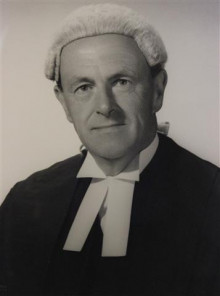
Herbert Richard Churton Wild was born in Blenheim in 1912 and raised in Feilding, where he attended Feilding Agricultural High School.
He graduated LLB and then LLM from Victoria University and became Sir Humphrey O'Leary's secretary when Sir Humphrey became King's Counsel in 1935. 4 years later Sir Richard went into practice on his own, continuing until the outbreak of the Second World War.
He served in the Middle East and Italy between 1940 and 1944, before returning to practise in Wellington and becoming a partner in Bell Gully and Company.
He became judge advocate general of the army in 1955 and then both Solicitor-General and Queen's Counsel in 1957, then Chief Justice in 1966. He was 53 at the time.
A dynamic, strong-willed leader, Sir Richard believed that the courts should adapt as times changed but that their respected status must be maintained. His reforming spirit led him to support the Beattie Commission on Courts and to revamp the Supreme Court rules. He was also a staunch defender of the rule of law: in Fitzgerald v Muldoon he ruled that a purported law change announced by the Prime Minister was illegal.
6 years before compulsory retirement, he was diagnosed with a brain tumour. He retired in January 1978 and died in May the same year.
________________________________________________________________________
Rt Hon Sir Ronald Davison (1978-1989)

Sir Ronald served in the Second World War, and graduated from Auckland University.
He practised in Auckland for 30 years. For most of this time he was a barrister sole, and he became a leading lawyer and Queen's Counsel. He was also active in the Law Society and law reform.
Sir Ronald was appointed Chief Justice at 57. During his time as Chief Justice, he supported significant justice system reforms, including major structural changes which saw the Supreme Court renamed the High Court and the magistrates' courts become district courts. New High Court rules and court management systems were also introduced.
Sir Ronald believed in the importance of protecting the legal rights of individuals and minority groups, and thought it essential that the judiciary be in tune with "responsible public opinion".
Sir Ronald died in July 2015
________________________________________________________________________
Rt Hon Sir Thomas Eichelbaum (1989-1999)
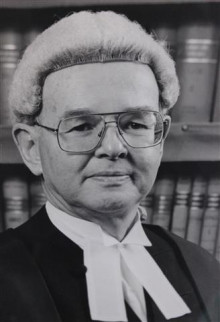
Born in 1931 to Jewish parents, Sir Thomas and his family escaped Germany when he was 7 years old.
He graduated from Victoria University then embarked on a distinguished legal career in Wellington. He became Queen's Counsel and President of the New Zealand Law Society.
Sir Thomas was appointed as a High Court judge in 1982, an additional judge of the Court of Appeal in 1984, and Chief Justice in 1989 at the age of 58. He was the first Chief Justice to be appointed from the New Zealand bench.
His pragmatic approach enabled many reforms in the courts. He oversaw the introduction of computers, the case management system and the Criminal Appeals Division, and the abolition of wigs in High Court proceedings. He also pushed for the separation of the Department of Courts from the Ministry of Justice, to bolster judicial independence.
In his judgments Sir Thomas was always mindful of providing clear guidance on the law.
Sir Thomas died in October 2018.
________________________________________________________________________
Rt Hon Dame Sian Elias

Chief Justice Dame Sian Elias studied law at the University of Auckland, graduating with LLB (Hons), and was admitted to the Bar in 1970. She gained a JSM from Stanford University in the United States, before entering legal practice from 1972 in Auckland. Dame Sian served as a Law Commissioner from 1986 until 1990. She was appointed a Queen's Counsel in 1988 and a judge of the High Court in 1995. Justice Elias became Chief Justice in 1999, and was awarded the GNZM the same year. Dame Sian became a member of the Supreme Court on its establishment in January 2004. She retired in March 2019.
- See Chief Justice - retired March 2019 to find out more about The Right Honourable Chief Justice Dame Sian Elias GNZM QC and her Valedictory sitting on 8 March 2019
Bibliography
- Spiller, Finn & Boast, A New Zealand Legal History (2nd Edn) (2001)
- Spiller, New Zealand Court of Appeal: A History 1958-1996 (2002)
- Cooke (ed), Portrait of a Profession (1969)
- An Encyclopedia of New Zealand 1966, http://teara.govt.nz/1966.
